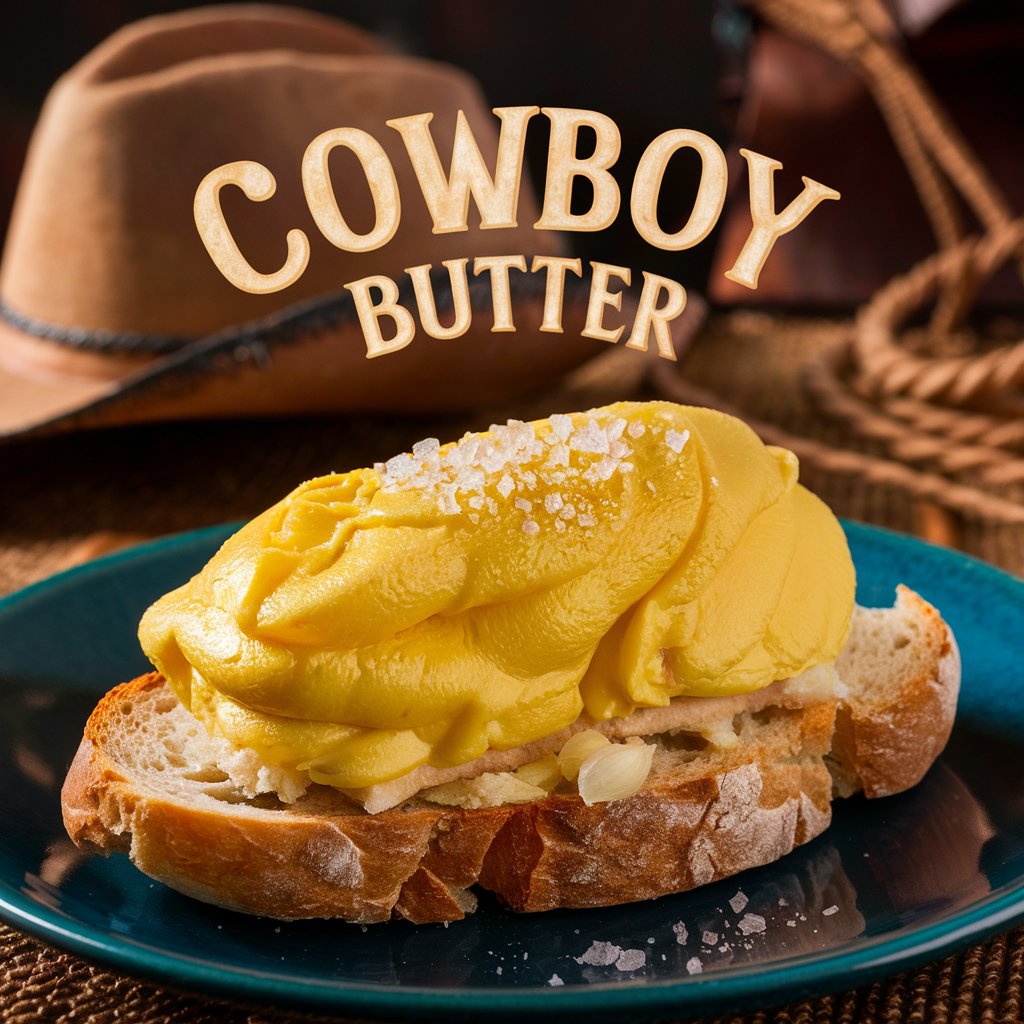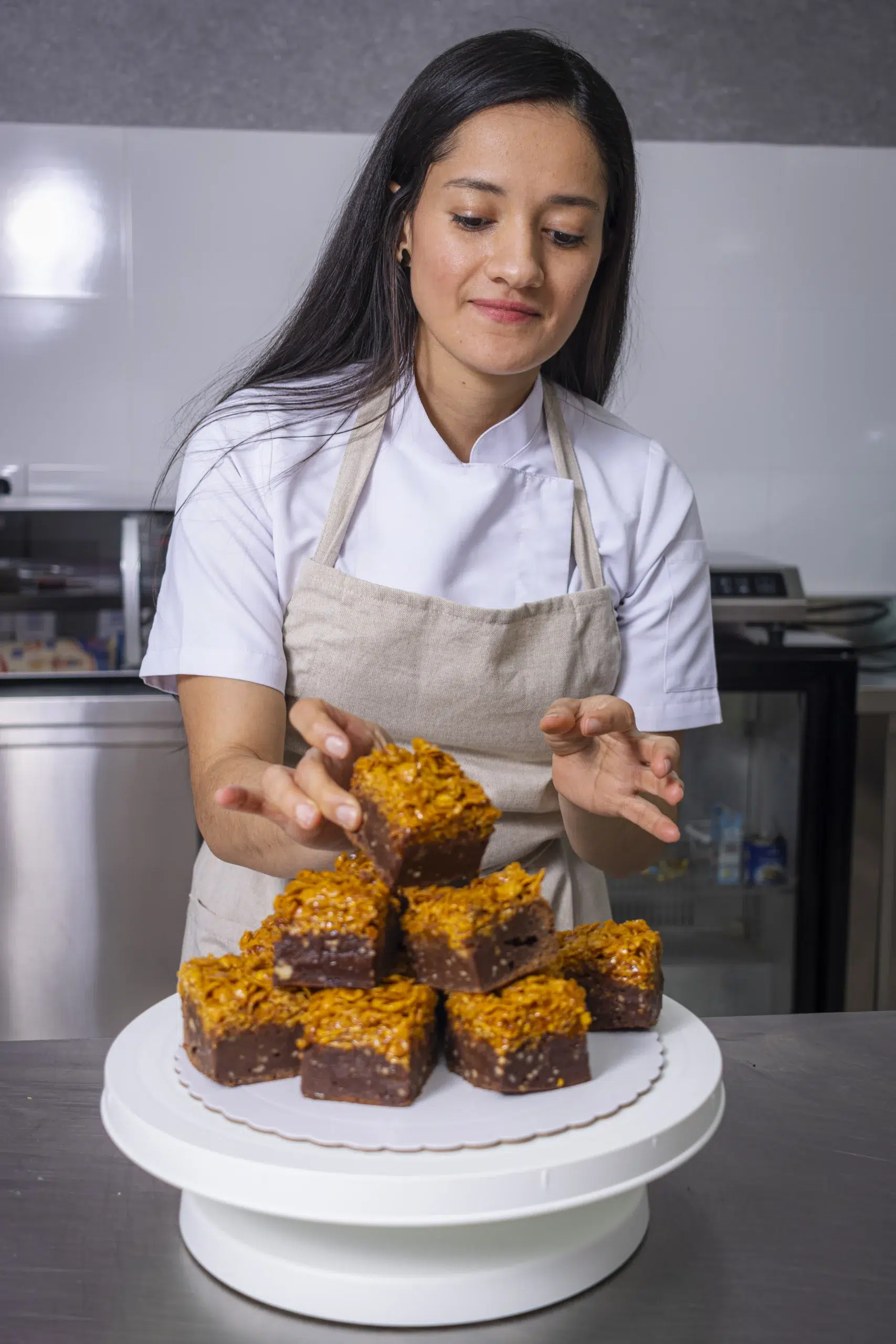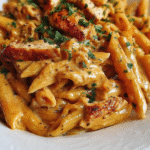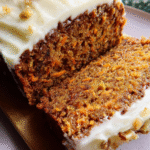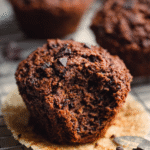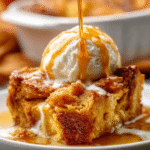Introduction to the Article on Cowboy Butter
Diving into the world of cowboy butter unveils a culinary sensation both flavorful and steeped in history. Whether it caught your eye on TikTok or at a dinner party, cowboy butter likely grabbed your attention with its robust taste and adaptability. This article explores what sets cowboy butter apart, tracing its origins and showcasing its versatility in the kitchen.
What is Cowboy Butter?
Definition and Ingredients
Why is it called cowboy butter? The name, evocative of rustic, robust meals by a campfire, suggests a blend meant for the bold. Cowboy butter is a compound butter, mixing softened butter with herbs, spices, and aromatics into a transformative concoction.
The standard recipe includes minced garlic, fresh parsley, chives, thyme, a touch of Dijon mustard, lemon zest, and a blend of spices such as paprika and chili powder. These ingredients not only provide depth and complexity but also blend seamlessly.
Making Cowboy Butter
Making cowboy butter is simple and accessible for cooks of all skill levels. Begin with butter at room temperature for ease of mixing. Add finely chopped garlic, herbs, and spices to the butter and combine them in a bowl. For a burst of freshness, mix in lemon zest and a bit of juice.
After mixing, you can shape the cowboy butter into logs using wax paper or place it in molds for a decorative look. If you’re using it right away, melt it gently and use it as a delicious dip or drizzle.
Cowboy butter excels beyond just steak—it enhances freshly baked bread, pasta, or grilled veggies with its savory notes. Its flexibility has made it essential for those who enjoy an instant culinary lift.
To start making this delightful condiment at home, the detailed cowboy butter recipe on Allrecipes provides an excellent guide with tips and user feedback.
This introduction to cowboy butter paves the way for further exploration of its history and culinary applications, promising more tasty insights in the upcoming sections.
Historical and Cultural Background
Origin of the Name
The intriguing name “cowboy butter” likely reflects a nod to the American cowboy’s rugged lifestyle, though its precise origins are unclear. This term conjures images of hearty, open-fire cooking, possibly pointing to the type of robust flavors found in this popular butter mix. The connection may stem from the simplicity and rustic appeal of the ingredients, reminiscent of a cowboy’s resourceful cooking.
Cultural Significance
Cowboy butter’s popularity today can also be seen as a revival of traditional cooking methods infused with modern twists. It has gained a following not only for its rich flavor but also as a part of the cultural tapestry that celebrates America’s culinary heritage. This butter variant has crossed over from a simple kitchen staple to a symbol of culinary creativity, showcasing how traditional elements can be reimagined for contemporary tastes.
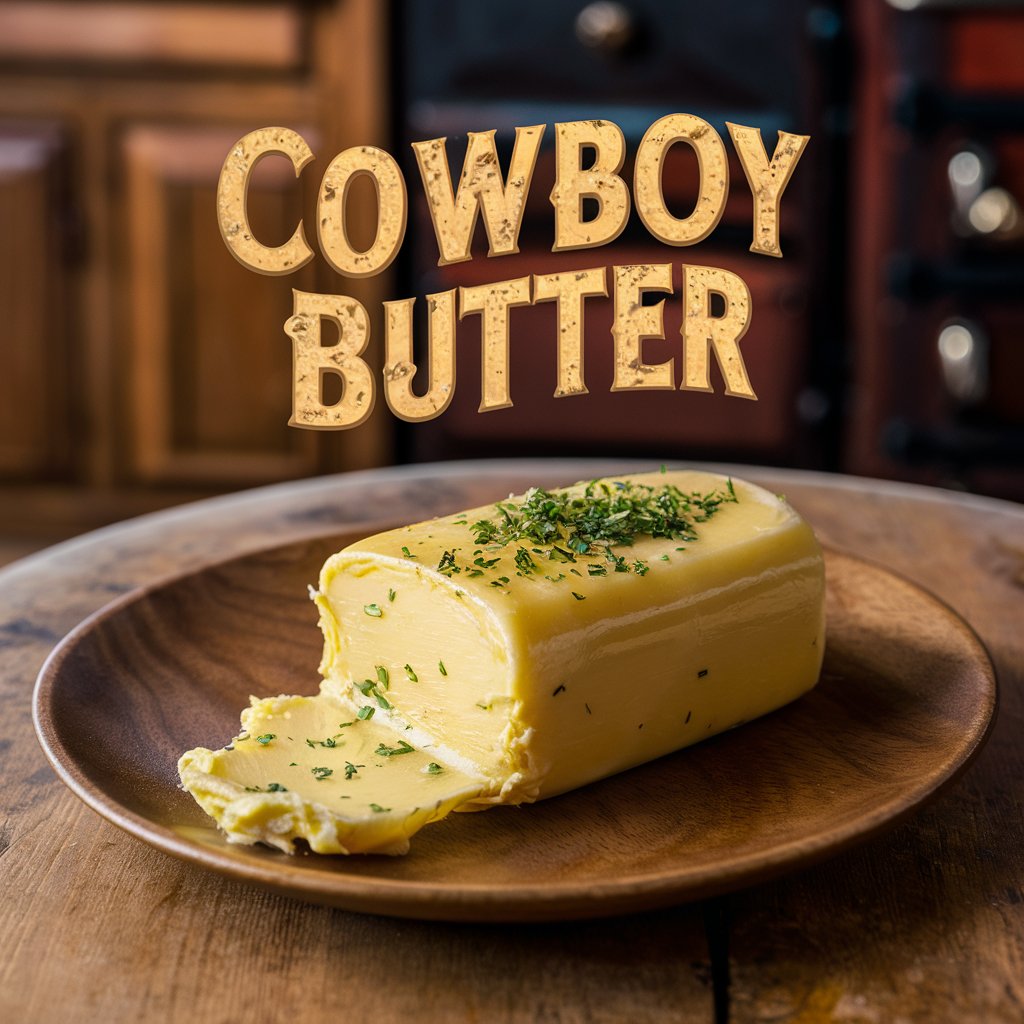
Culinary Roots and Evolution
The recipe for cowboy butter has likely evolved from basic seasoned butters used historically across various cultures to enhance cooked meats and vegetables. Its current form as a viral sensation is a testament to how digital platforms can breathe new life into classic recipes. Cowboy butter taps into a collective nostalgia for hearty and wholesome meals while providing a versatile base that encourages experimentation in the kitchen.
This section not only sheds light on cowboy butter’s storied past but also emphasizes its place in today’s culinary landscape, bridging the gap between history and modern-day cooking trends. By understanding its roots, we can appreciate cowboy butter not just as a food trend but as a continuation of culinary history that still resonates in our meals today.
Storage and Preservation
How to Store Cowboy Butter
Proper storage of cowboy butter ensures that its flavors remain fresh and vibrant for future use. The best practice for keeping cowboy butter is to store it in the refrigerator in an airtight container. This method preserves its freshness and prevents the absorption of other flavors from the fridge. For long-term storage, cowboy butter can be frozen. Simply wrap it tightly in plastic wrap or place it in a freezer-safe container, where it can last for up to six months.
Shelf Life Considerations
When stored correctly, cowboy butter maintains its quality for several weeks in the refrigerator and even longer in the freezer. It’s important to note the date of preparation on the container as a reminder of its age. Before use, always check for any signs of spoilage, such as an off smell or discoloration, to ensure the butter is still suitable for consumption.
Tips for Freshness
To maximize the life of your cowboy butter, divide it into smaller portions before freezing. This way, you can thaw exactly the amount you need without compromising the rest of the batch. Thawing cowboy butter should be done in the refrigerator overnight to maintain its texture and flavor integrity.
This section not only instructs on how to effectively store cowboy butter but also emphasizes the importance of handling it with care to extend its usability. As we wrap up our exploration of cowboy butter, understanding its storage and preservation is crucial for those looking to incorporate this flavorful addition into their culinary repertoire regularly.
Encouraging Home Cooking with Cowboy Butter
Exploring New Flavors
Encouraging home cooks to experiment with cowboy butter is more than just a suggestion—it’s a call to culinary adventure. This versatile condiment offers a gateway to exploring new flavors and refining cooking techniques. By integrating cowboy butter into various dishes, you can discover how simple ingredients, when blended thoughtfully, can produce complex and delightful flavors.
Simple Recipes for Beginners
For those new to cooking with cowboy butter, starting with simple recipes is key. Consider using it as a finishing butter for steamed vegetables or a flavorful addition to your favorite pasta. It’s also perfect for enhancing the taste of grilled meats or as a spread on warm, crusty bread.
Advanced Culinary Applications
More experienced chefs might explore advanced culinary applications of cowboy butter. It can serve as a base for more intricate sauces or be incorporated into the stuffing of meats and pastries. Its robust flavor can stand up to strong spices and herbs, making it an ideal component in diverse culinary traditions.
Sharing the Joy of Cooking
Lastly, sharing recipes and dishes made with cowboy butter can inspire others to try this delightful ingredient. Organize a cooking day with friends or family, or share your creations on social media to spread the word about the rich flavors and versatility of butter.
This section aims to motivate readers to make cowboy butter a part of their cooking journey, encouraging them to explore its potential and share their culinary discoveries. As more people experience the unique qualities of cowboy butter, it continues to make a lasting impact on culinary traditions and personal cooking experiences alike.
Promoting Sustainable Cooking Practices with Cowboy Butter
Emphasizing Sustainable Ingredients
Promoting the use of cowboy butter aligns with sustainable cooking practices by encouraging the selection of locally sourced and organic ingredients. Incorporating herbs and spices grown in your garden or community not only enhances the flavor of butter but also reduces the environmental impact associated with long-distance food transportation.
Minimizing Food Waste
Cowboy butter can also play a pivotal role in minimizing food waste. By transforming leftover herbs and near-expiration dairy products into a delicious compound butter, you can extend the life of ingredients that might otherwise be discarded. This practice not only saves money but also contributes to a more sustainable kitchen.
Supporting Local Producers
Using cowboy butter as a culinary staple encourages support for local dairy farms and herb growers. Purchasing butter and herbs from local producers promotes a sustainable economy and helps maintain the ecological balance by supporting farming practices that are often more environmentally friendly than those of large-scale agricultural operations.
Educating Others on Sustainability
Finally, as you enjoy the diverse uses of cowboy butter, take the opportunity to educate others about the benefits of sustainable cooking. Hosting cooking classes, writing blog posts, or simply sharing recipes that highlight the use of sustainable ingredients can inspire more people to consider how their cooking choices affect the environment.
This section not only underscores the practical and flavorful benefits of cowboy butter but also highlights its role in fostering sustainable cooking habits. By integrating cowboy butter into more kitchens, we can support a culinary movement that values both taste and environmental stewardship.
